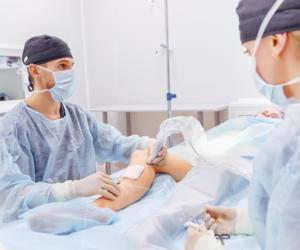A test that uses a radioactive tracer and special camera to find breast cancer is called molecular breast imaging which is a type of functional imaging – the picture it creates show differences in the activity of the tissue. Tissue that contains cells that are rapidly growing and dividing will appear brighter than less active tissue such as cancer cells.
A small amount of radioactive tracer will be injected into a vein in your arm during molecular breast imaging. The tracer will attach to breast cancer cells that can then be detected using gamma camera which is a camera that detects the gamma radiation released by the tracer. This is not yet available worldwide because it is a new technology.
A patient will need to undergo molecular breast imaging for the following reasons:
- Check for breast abnormalities – your doctor may suggest this to evaluate an unusual area detected on a mammogram or a breast lump, and if other imaging tests have been inconclusive, this may also be used in women for whom an MRI is recommended but cannot undergo the procedure because of allergies to contrast material.
- Screen for breast cancer in women with dense breast tissue – this detects more breast cancers in women with dense breast tissue than a mammogram alone if combined with a breast X-ray. Breast tissue is composed of milk glands, milk ducts and supportive tissue or dense breast tissue and fatty tissue.
It will be difficult to detect dense breast tissue and cancers in a woman with dense breasts because they will both appear white on a mammogram. In some studies, if you combine molecular breast imaging with mammogram, the result is finding 3 times more breast cancers than a mammogram alone.
There is evidence about the benefits in detecting cancers in women with dense breasts though molecular breast imaging is not approved by the U.S. Food and Drug Administration for breast cancer screening.
Here’s what you can expect before, during, and after your molecular breast imaging.
You will ask to change into a hospital gown and a blanket to keep your chest warm while waiting for the test to begin. You should be on a relaxed because this can improve the uptake of the tracer to your breast tissue. You will first receive an injection of the radioactive tracer – it contains a substance that's quickly absorbed by fast-growing cells like cancer cells – into a vein in your arm.
This tracer will emit gamma rays that are detected by two small gamma cameras. The molecular breast imaging system looks like a mammogram machine. Your doctor will ask you to remove or open your gown and place one breast on the flat surface of a gamma camera in front of you. You may need to lean forward a little.
The flat surface of a second gamma camera will be lowered on top of your breast. The compression is not painful or uncomfortable because it will be light. As the gamma cameras record the activity of the tracer, you will be asked to sit still for 10 minutes. Your breast will be repositioned for a second image and as the image is created, you will have to sit still again for 10 minutes.
For two breast image, two images are created of each breast and each image takes about 10 minutes which means you will have to sit still for 40 minutes. A technologist will check the quality of the images so you may know if you need to repeat the procedure if the images have problems. You may return to your daily activities after the test.
A radiologist who specializes in imaging techniques will evaluate and review the resulting images from your molecular breast imaging test.
He will report his findings to your doctor, so you and your doctor can discuss the results. Molecular breast imaging records how much of the radioactive tracer is absorbed by your breast tissue.
Your doctor may suggest additional testing or probably a breast biopsy to determine whether the area is cancer if a suspicious concentration of tracer is found in the images.






